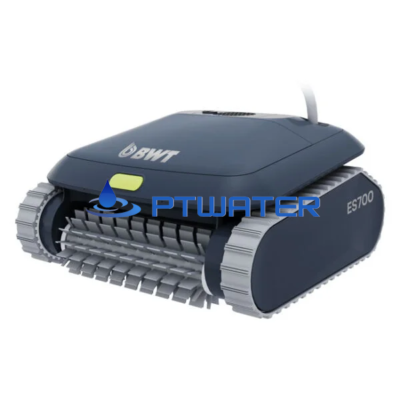Adopting appropriate shrimp waste water treatment technology is very important for shrimp to grow well and minimize environmental pollution. Biotechnology in wastewater treatment of shrimp ponds.
Due to the nature of the soil and hydrology, the Mekong Delta is not only considered the largest granary in the country, but production from aquaculture also occupies a considerable “position”, especially shrimp farming. It can be seen that the development of shrimp farms on an industrial scale has achieved a lot of success and improved the living standards of the people here. However, the effluent from shrimp farming process at the same time generates many environmental implications. Therefore, only select and apply solutions to treat shrimp waste water appropriately , it can develop sustainable shrimp farming and protect the environment. In this article, we would like to talk about the solution of using biotechnology in wastewater treatment in industrial shrimp ponds .

Industrial shrimp ponds are being developed widely in the Mekong Delta
Environmental impacts come from industrial shrimp farming
Over the past few years, brackish water shrimp farming in the districts of the Mekong Delta has been growing, the technical level of farmers and the level of intensive farming is increasing … But the consciousness of people The use of chemicals and antibiotics in shrimp culture is not high, the treatment of wastewater prior to discharge into the environment has not received due attention of shrimp farmers.
It can be seen that the amount of waste generated is closely related to feed production technology and shrimp farming system. Redundant food, shrimp faeces and nutrient metabolism are the main sources of contaminants. The waste water also contains residues of antibiotics, medicines for treatment … Waste water carry a large amount of nitrogen compounds, Phosphorus and other nutrients, creating super-moisturizing and spreading bacteria. The presence of carbonic compounds and organic matter will reduce dissolved oxygen levels and increase BOD, COD, H 2 S, Ammonia and CH 4 content in the natural basin.
Select appropriate waste water treatment technology to help shrimp grow well and protect the environment.
Most of the surplus product in shrimp culture is accumulated in pond mud, which is harmful to shrimp and shrimp farming because the mud is very toxic, oxygen deficient and contains many harmful substances such as Ammonia, Nitrite, H 2 S, direct impact on shrimps is always stress, poor eating, reduced growth rate and susceptible to bacterial disease and mass death.
The discharge of pond water and pond solid waste in intensive and semi-intensive shrimp culture to natural canals without treatment will result in sedimentation of the canal system, polluted natural water environment serious. If the discharge is continuous, there is no time for the environment to recover, the pathogen is cut, the organic humus will accumulate as the water environment becomes ephemeral, intensive shrimp farming and sale. Intensive farming will be at greater risk. On the other hand, the infrastructure serving the shrimp farming areas is not complete, the irrigation system is the system serving the needs of agricultural cultivation; Many shrimp farms have canals, separate discharge channels, even canal sections are sedimented, the bottom of the canal is higher than the bottom of the shrimp pond.
Biotechnology in wastewater treatment for industrial shrimp farming
The development of technology in the wastewater treatment industry also provides us with a variety of methods of treating shrimp wastewater differently. Below is a solution to treat the output of shrimp ponds but do not use chemicals.
Solution using microorganisms
Microbial treatment of shrimp wastewater using microbial strains, collection of extracellular enzyme components of microbial growth; extracellular enzymes; Biological nutrients, minerals that activate the original growth and activated dendritic activity dissolve dissolved organic and insoluble matter from shrimp faeces, the accumulation of food residue to create stability, Maintaining water quality and water color in ponds. Typically, microbial preparations used in this solution include:
– Aerobic methods use aerobic microorganisms to treat. Researchers Phan Thi Hong Ngan and Pham Khac Lieu (Hue University) applied aerobic treatment technology with submerge aerated fixed bed (SAFB), using modified aerobic activated sludge The brackish water quality was 73.7%, NH4-N 97.4%. Aerobic methods have long retention times that facilitate the growth and activity of nitrifying bacteria.
Microorganism EcoClean TM 108 is an aerobic microbiological product specialized in the treatment of aquatic wastewater
– Anaerobic method uses anaerobic microorganism for treatment. This is a commonly used method for wastewater treatment, especially the Upflow Anaerobic Sludge Blanket (UASB). This technology distributes bottom-up wastewater through anaerobic sludge to conduct organic decomposition with anaerobic microorganisms. The phase separation system separates the solid-liquid-gas phase to separate the gases, transports the slurry to the bottom of the tank and leads the water back to the treatment. The research by Mirzoyan N. and Gross A. at NCBI shows that the UASB reactor is well suited for brackish water aquaculture, reducing 81% suspended solids (TSS), 98% COD, 92% volatile.






